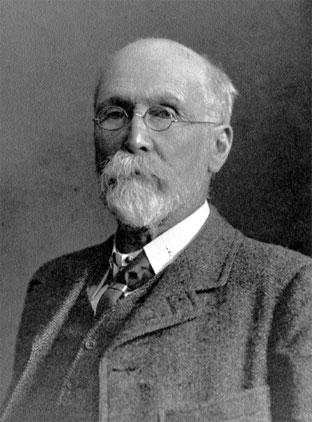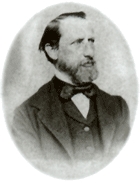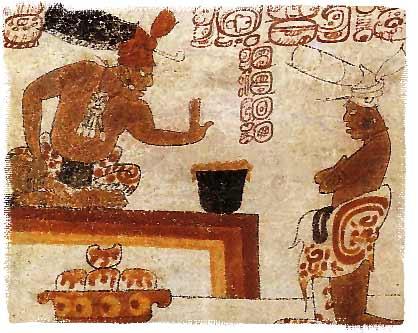|
York's Chocolate Story
York's Chocolate Story is a visitor attraction and chocolate museum on King's Square, in York. Opened in March 2012, it shows the history of chocolate making in York, including the Rowntree's factory which opened in 1890, owned since 1988 by Nestlé. The attraction is located in the centre of York, in King's Square. In 2018 it won gold in the ''Guided Tour of the Year'' category of the VisitEngland VisitEngland is the official tourist board for England. Before 1999 it was known as the English Tourist Board and between 1999 and 2009 as the English Tourism Council. In 2003, it merged with the British Tourist Authority to form VisitBritain bef ... Awards. References External links York's Chocolate StoryEducational Visits UKDesign {{UK-museum-stub 2012 establishments in England Chocolate museums Economy of North Yorkshire Food museums in the United Kingdom Museums established in 2012 Museums in York ... [...More Info...] [...Related Items...] OR: [Wikipedia] [Google] [Baidu] |
King's Square (York)
King's Square is an open area in the city centre of York, in England. It is popular with tourists, who are often entertained by buskers and street performers. Nikolaus Pevsner notes that "the square has trees, which distinguishes it". The York's Chocolate Story attraction lies on the western side of the square. History In the Roman period, the south-eastern gate of Eboracum lay on the site of what is now King's Square. This was built in about 108, as recorded on a surviving inscription, now in the Yorkshire Museum. The area was mentioned by Egil Skallagrimsson in the 10th-century as "Konungsgarthr", and this has led to a belief that this was the location of the royal palace of the Danelaw, and possibly of its predecessors, the Kingdom of Northumbria and the Kingdom of Deira. By 1430, the west side of the square was occupied by a row of mercer's shops, with a building named "Hellekeld" to their south. In 1627, Duke Gill Hall lay on the north-east side of the square, on ... [...More Info...] [...Related Items...] OR: [Wikipedia] [Google] [Baidu] |
Museum
A museum ( ; plural museums or, rarely, musea) is a building or institution that cares for and displays a collection of artifacts and other objects of artistic, cultural, historical, or scientific importance. Many public museums make these items available for public viewing through exhibits that may be permanent or temporary. The largest museums are located in major cities throughout the world, while thousands of local museums exist in smaller cities, towns, and rural areas. Museums have varying aims, ranging from the conservation and documentation of their collection, serving researchers and specialists, to catering to the general public. The goal of serving researchers is not only scientific, but intended to serve the general public. There are many types of museums, including art museums, natural history museums, science museums, war museums, and children's museums. According to the International Council of Museums (ICOM), there are more than 55,000 museums in 202 c ... [...More Info...] [...Related Items...] OR: [Wikipedia] [Google] [Baidu] |
Chocolate
Chocolate is a food made from roasted and ground cacao seed kernels that is available as a liquid, solid, or paste, either on its own or as a flavoring agent in other foods. Cacao has been consumed in some form since at least the Olmec civilization (19th-11th century BCE), and the majority of Mesoamerican people ─ including the Maya and Aztecs ─ made chocolate beverages. The seeds of the cacao tree have an intense bitter taste and must be fermented to develop the flavor. After fermentation, the seeds are dried, cleaned, and roasted. The shell is removed to produce cocoa nibs, which are then ground to cocoa mass, unadulterated chocolate in rough form. Once the cocoa mass is liquefied by heating, it is called chocolate liquor. The liquor may also be cooled and processed into its two components: cocoa solids and cocoa butter. Baking chocolate, also called bitter chocolate, contains cocoa solids and cocoa butter in varying proportions, without any added sugar. Powder ... [...More Info...] [...Related Items...] OR: [Wikipedia] [Google] [Baidu] |
York
York is a cathedral city with Roman origins, sited at the confluence of the rivers Ouse and Foss in North Yorkshire, England. It is the historic county town of Yorkshire. The city has many historic buildings and other structures, such as a minster, castle, and city walls. It is the largest settlement and the administrative centre of the wider City of York district. The city was founded under the name of Eboracum in 71 AD. It then became the capital of the Roman province of Britannia Inferior, and later of the kingdoms of Deira, Northumbria, and Scandinavian York. In the Middle Ages, it became the northern England ecclesiastical province's centre, and grew as a wool-trading centre. In the 19th century, it became a major railway network hub and confectionery manufacturing centre. During the Second World War, part of the Baedeker Blitz bombed the city; it was less affected by the war than other northern cities, with several historic buildings being gutted and restore ... [...More Info...] [...Related Items...] OR: [Wikipedia] [Google] [Baidu] |
Rowntree's
Rowntree's is a British confectionery brand and former business based in York, England. Rowntree developed the Kit Kat (introduced in 1935), Aero (introduced in 1935), Fruit Pastilles (introduced in 1881), Smarties (introduced in 1937) brands, and the Rolo and Quality Street brands when it merged with Mackintosh's in 1969 to form Rowntree Mackintosh Confectionery. Rowntree's also launched After Eight thin mint chocolates in 1962. The Yorkie and Lion bars were introduced in 1976. Rowntree's also pioneered the festive selection box (a gift consisting of assorted bars and sweets) which in the UK have been a staple gift at Christmas for over a century. Founded in 1862, the company developed strong associations with Quaker philanthropy. Throughout much of the 19th and 20th centuries, it was one of the big three confectionery manufacturers in the United Kingdom, alongside Cadbury and Fry, both also founded by Quakers. In 1981, Rowntree's received the Queen's Award for ... [...More Info...] [...Related Items...] OR: [Wikipedia] [Google] [Baidu] |
Nestlé
Nestlé S.A. (; ; ) is a Swiss multinational food and drink processing conglomerate corporation headquartered in Vevey, Vaud, Switzerland. It is the largest publicly held food company in the world, measured by revenue and other metrics, since 2014."Nestlé's Brabeck: We have a "huge advantage" over big pharma in creating medical foods" , ''CNN Money'', 1 April 2011 It ranked No. 64 on the ''Fortune'' Global 500 in 2017 and No. 33 in the 2016 edition of the '''' Global 2000 list of largest publ ... [...More Info...] [...Related Items...] OR: [Wikipedia] [Google] [Baidu] |
VisitEngland
VisitEngland is the official tourist board for England. Before 1999 it was known as the English Tourist Board and between 1999 and 2009 as the English Tourism Council. In 2003, it merged with the British Tourist Authority to form VisitBritain before relaunching as a separate corporate body in 2009. VisitEngland's stated mission is to "build England's tourism product, raise Britain’s profile worldwide, increase the volume and value of tourism exports and develop England and Britain’s visitor economy". Quality assessment schemes The VisitEngland accommodation assessment schemes were run under licence by Quality in Tourism from 2012 to 2017, when the AA took on the license. The scheme issues quality awards to holiday accommodation, hotel, bed and breakfast, self catering holiday cottages and others. See also * Tourism in England * VisitBritain * Northern Ireland Tourist Board * VisitScotland VisitScotland, formerly the Scottish Tourist Board, is a national tourism organis ... [...More Info...] [...Related Items...] OR: [Wikipedia] [Google] [Baidu] |
2012 Establishments In England
1 (one, unit, unity) is a number representing a single or the only entity. 1 is also a numerical digit and represents a single unit of counting or measurement. For example, a line segment of ''unit length'' is a line segment of length 1. In conventions of sign where zero is considered neither positive nor negative, 1 is the first and smallest positive integer. It is also sometimes considered the first of the infinite sequence of natural numbers, followed by 2, although by other definitions 1 is the second natural number, following 0. The fundamental mathematical property of 1 is to be a multiplicative identity, meaning that any number multiplied by 1 equals the same number. Most if not all properties of 1 can be deduced from this. In advanced mathematics, a multiplicative identity is often denoted 1, even if it is not a number. 1 is by convention not considered a prime number; this was not universally accepted until the mid-20th century. Additionally, 1 is the ... [...More Info...] [...Related Items...] OR: [Wikipedia] [Google] [Baidu] |
Chocolate Museums
Chocolate is a food made from roasted and ground cacao seed kernels that is available as a liquid, solid, or paste, either on its own or as a flavoring agent in other foods. Cacao has been consumed in some form since at least the Olmec civilization (19th-11th century BCE), and the majority of Mesoamerican people ─ including the Maya and Aztecs ─ made chocolate beverages. The seeds of the cacao tree have an intense bitter taste and must be fermented to develop the flavor. After fermentation, the seeds are dried, cleaned, and roasted. The shell is removed to produce cocoa nibs, which are then ground to cocoa mass, unadulterated chocolate in rough form. Once the cocoa mass is liquefied by heating, it is called chocolate liquor. The liquor may also be cooled and processed into its two components: cocoa solids and cocoa butter. Baking chocolate, also called bitter chocolate, contains cocoa solids and cocoa butter in varying proportions, without any added sugar. Powdered bakin ... [...More Info...] [...Related Items...] OR: [Wikipedia] [Google] [Baidu] |
Economy Of North Yorkshire
An economy is an area of the production, distribution and trade, as well as consumption of goods and services. In general, it is defined as a social domain that emphasize the practices, discourses, and material expressions associated with the production, use, and management of scarce resources'. A given economy is a set of processes that involves its culture, values, education, technological evolution, history, social organization, political structure, legal systems, and natural resources as main factors. These factors give context, content, and set the conditions and parameters in which an economy functions. In other words, the economic domain is a social domain of interrelated human practices and transactions that does not stand alone. Economic agents can be individuals, businesses, organizations, or governments. Economic transactions occur when two groups or parties agree to the value or price of the transacted good or service, commonly expressed in a certain currency. Howe ... [...More Info...] [...Related Items...] OR: [Wikipedia] [Google] [Baidu] |
Food Museums In The United Kingdom
Food is any substance consumed by an organism for nutritional support. Food is usually of plant, animal, or fungal origin, and contains essential nutrients, such as carbohydrates, fats, protein (nutrient), proteins, vitamins, or Mineral (nutrient), minerals. The substance is Ingestion, ingested by an organism and assimilated by the organism's Cell (biology), cells to provide energy, maintain life, or stimulate growth. Different species of animals have different List of feeding behaviours, feeding behaviours that satisfy the needs of their unique metabolisms, often evolved to fill a specific ecological niche within specific geographical contexts. Omnivore, Omnivorous humans are highly adaptable and have adapted to obtain food in many different ecosystems. The majority of the food energy required is supplied by the industrial food industry, which produces food with Intensive farming, intensive agriculture and distributes it through complex food processing and food distribution s ... [...More Info...] [...Related Items...] OR: [Wikipedia] [Google] [Baidu] |







_per_capita_in_2020.png)
